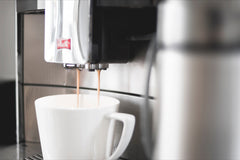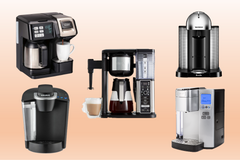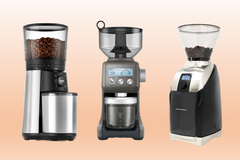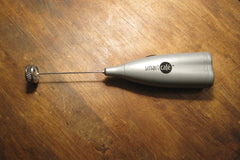
The love of coffee is a form of art.
To be a true enthusiast, you need to know all about the different types of coffee.
With this in mind, there’s a current craze over flat white coffee. The National Coffee Association claims it is slowly becoming a first-choice drink for most Americans.
The only thing is, it looks and almost tastes like a latte. Yet, both brews allow you to enjoy the sensorial taste of the coffee beans.
A common question asked is: what exactly is a flat white? And is it different from a latte?
Let’s get to know about the rich and bold flat white and what sets it apart from the mild and sweet latte.
Understanding the Flat White
It isn’t enough to know that flat white is a type of coffee.
You’ll find great fulfillment in understanding how it’s made and where it originates. To know the difference between a flat white and a latte, you need to understand each of them in these ways. It can also make for an interesting conversation piece around friends and family.
Let’s begin with the flat white.
History of the Flat White's Origin
Flat whites have a very controversial history. That’s what currently makes it the most interesting type of coffee.
In 1989, Fraser McInnes, a barista, was trying to make a cappuccino in his cafe in Wellington, New Zealand. But, there wasn’t enough fat to froth the milk towards the end of summer. Instead, McInnes gave the customer a double espresso topped off with a silky foam layer.
When McInnes handed the coffee to the customer, he said:
“Sorry, it’s a flat white.”
After this, his business partner included the flat white in their cafe menu.
In a nutshell, a flat white is actually a failed cappuccino.
Though, things got more interesting in January 2015 when Starbucks introduced the flat white. On their website, they say it originates from Melbourne, Australia.
Without a doubt, this became an issue for the New Zealanders. So far, the mystery pretty much remains unsolved.
What Is a Flat White Coffee?
Its controversial origin makes it hard to tell what exactly a flat white is. Since it’s a brew claimed by different countries, it can be made and served in different ways.
Flat Whites in Australia and New Zealand
Despite the controversy, these two countries appear to make flat whites the same way. This involves:
- Two espresso shots.
- 4–5 ounces of steamed milk.
- 0.5 ounces of foam.
The major similarity is in the source of milk.
Milk from Australia and New Zealand comes from free-range cows. It should be heated at the right temperature to achieve the silky texture that a flat white needs.
Flat Whites in America
Starbucks is known for its unique coffee specialty. Without a doubt, the Starbucks flat white appears to be a completely different drink.
Through their January 2015 press release, Starbucks released their flat white recipe. They use two ristretto shots and a layer of velvety steamed whole milk topped off with a latte art dot - sometimes known as the 'flat white dot'.
The unique aspect of this Starbucks recipe is the ristretto shots.
A ristretto is a “short shot” of strong espresso. This gives the flat white a sweeter and stronger coffee flavor.
Layer of Milk Foam
When it comes to making a flat white, the texture and thickness of the foam is critical to achieving the ideal taste and mouthfeel. There are three main types of foam used in espresso drinks:
- flat foam: as the name suggests, is relatively flat foam with little to no visible bubbles. It is created by aerating the milk with a steam wand, similar to how you would create microfoam, but with less aeration. The resulting texture is similar to a velvety sauce and is often used in flat whites.
- cappuccino foam: a thicker foam with more visible bubbles. It is created by aerating the milk more than flat foam and then allowing it to sit for a short period to let the bubbles separate from the liquid. This results in a thicker, more meringue-like texture that sits on top of the espresso.
- latte foam: an even thinner foam than cappuccino foam and has larger bubbles. It is created by aerating the milk more than cappuccino foam but less than flat foam. The resulting texture is similar to a light meringue and is often used in lattes.
In terms of taste and mouthfeel, the texture and thickness of the foam can greatly impact the overall experience of the flat white.
- Flat foam provides a velvety, smooth texture that blends well with the espresso.
- Cappuccino foam can result in a drier, airier mouthfeel due to its thicker texture.
- Latte foam, being the thinnest of the three, can contribute a lighter, more airy texture to the espresso drink.
To achieve the ideal texture and thickness for each type of foam, it is important to steam the milk properly.
- For flat foam, the milk should be aerated less than microfoam and heated to around 60-65°C.
- For cappuccino foam, the milk should be aerated more than flat foam and heated to around 55-60°C.
- The milk should be aerated even more than cappuccino foam for latte foam but heated to around 50-55°C.
Here's a table to summarize the ideal ratio of foam to milk for each type of foam in a flat white, cappuccino, and latte:
| Type of Foam | Flat White | Cappuccino | Latte |
| Flat Foam | 1/3 | 1/3 | N/A |
| Cappuccino Foam | N/A | 1/3 | N/A |
| Latte Foam | N/A | N/A | 1/3 - 1/4 |
It's important to note that the ideal ratio can vary depending on personal preference and the cup's size.
In terms of common mistakes, a common one is over-aerating the milk, which can result in large bubbles and a dry, frothy texture. It's important also to avoid overheating the milk, which can result in a burnt or scorched taste.
Overall, understanding the differences between flat, cappuccino, and latte foam and how they relate to making a flat white can greatly enhance your coffee-making skills and result in a more enjoyable drinking experience.
What is the Best Way to Create Flat Foam?
Various types of milk frothers are available in the market, each with its advantages and disadvantages. However, the best type of milk frother for creating flat foam is a steam wand on an espresso machine.
- Steam wands are designed to heat and froth milk simultaneously, creating a rich and creamy texture.
- They allow the barista to control the temperature and texture of the milk, resulting in the ideal foam for a flat white.
- Additionally, using a steam wand allows for the creation of microfoam, which is the ideal textured milk for creating latte art.
Other types of milk frothers, such as handheld frothers and automatic frothers, may not provide the same level of control over the texture and temperature of the milk.
Handheld frothers can be difficult to control and may not create the desired texture for a flat white, while automatic frothers can overheat the milk and create a thick layer of dense foam that is unsuitable for the drink.
How to Make a Flat White Coffee at Home
Despite its controversial origin, baristas say that there’s no official way to make a flat white.
With that, the basic way to make a flat white is this:
Step 1: Brew 2 Shots of Espresso
You can brew your espresso at home using an espresso machine or an ordinary coffee machine.
The two espresso shots should fill a large ceramic cup of 10–12 ounces. Set the espresso aside and move to the next step.
Step 2: Steam the Milk
Steam the milk at 55–66 degrees Celcius using a milk frother (our top pick is the Zulay Executive Series Handheld Milk Frother). The milk forms a thin microfoam layer and has a velvety texture.
Use a pitcher and steam wand for a few seconds to keep the foamed milk creamy.
Step 3: Stretch the Milk in a Pitcher
Stretching blends any large bubble with the milk to make the velvety microfoam. Thump the pitcher on the counter and lightly swirl the foamed milk to do this.
Step 4: Pour the Steamed Milk Over the Espresso Shots
The steamed milk will cover the espresso shots, forming a thin 5 mm layer of microfoam. This is why it’s called the “flat white.”
The thin microfoam layer allows you to get creative and add some art if that’s your specialty.
It’s usually served in a smaller ceramic mug.
What’s the Difference Between a Flat White and a Cappuccino?
This is an important question since McInnes meant to make a flat white instead of a cappuccino.
A cappuccino has a lower coffee-to-milk ratio compared to a flat white. It has a 1:1:1 ratio of espresso, steamed milk, and a thick layer of foam.
A flat white has a thin layer of foam called “microfoam.” The microfoam forms when the milk is steamed. For a cappuccino, the foam layer is formed by milk froth.

Flat Whites vs. Lattes
You need to know the differences first before making a latte or a flat white.
The confusion may arise because flat whites are sometimes called “small lattes.” In reality, these two drinks are completely different in appearance and content.

The flat white and latte are different in the following ways:
| Flat Whites | Lattes | |
| Origin | New Zealand Or Australia | America |
| Ceramic Cup | Cappuccino mug | Tall glass |
| Espresso Shot | Double shot of espresso | 1–2 shots of espresso |
| Steamed Milk | 4–5 ounces | 8–16 ounces |
| Microfoam | 0.5 ounces | 1–2 ounces |
| Texture | Creamy | Milky |
| Taste | Smooth, milky, and stronger espresso taste | Sweet and smooth drink |
| Brew Strength | Medium | Light |
To sum it up, have a look at this chart:
For a detailed look into all espresso drinks, watch the video below:
Make Your Flat White at Home Using the Nomad Coffee Club Monthly Subscription
Are you more of a flat white or a latte person?
You don’t need to choose. You can make both of these tasty brews right from the comfort of your home.
Nomad Coffee Club offers organic and ethically sourced coffee at your convenience. Through our monthly subscription boxes, you will:
- Pick a coffee plan that suits your lifestyle.
- Get a different coffee selection each month.
- Receive freshly roasted coffee beans.
- Have flexible and adjustable doorstep delivery.
You can join our monthly coffee subscriptions for either 3, 6, or 12 months.






